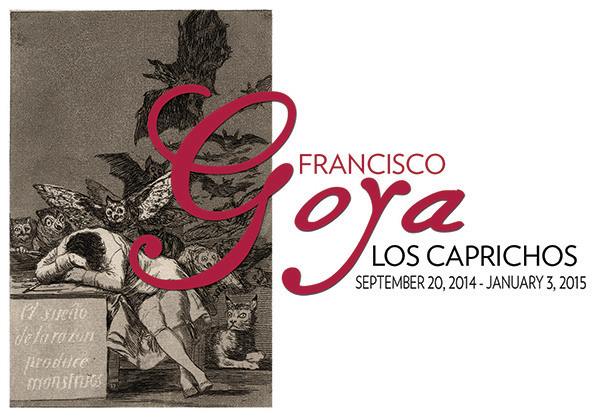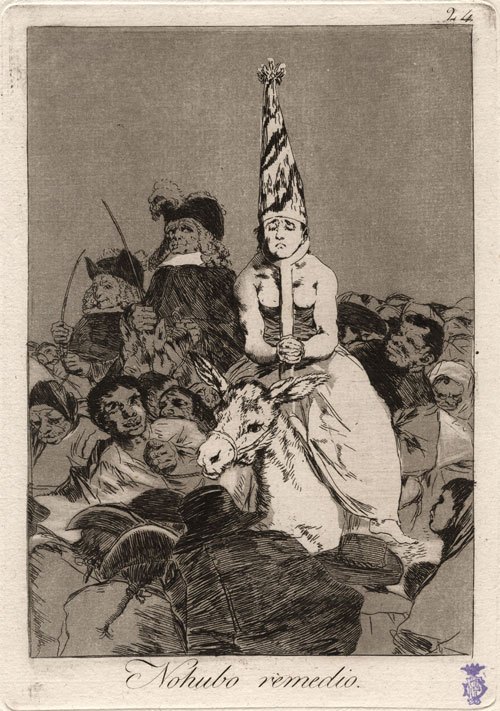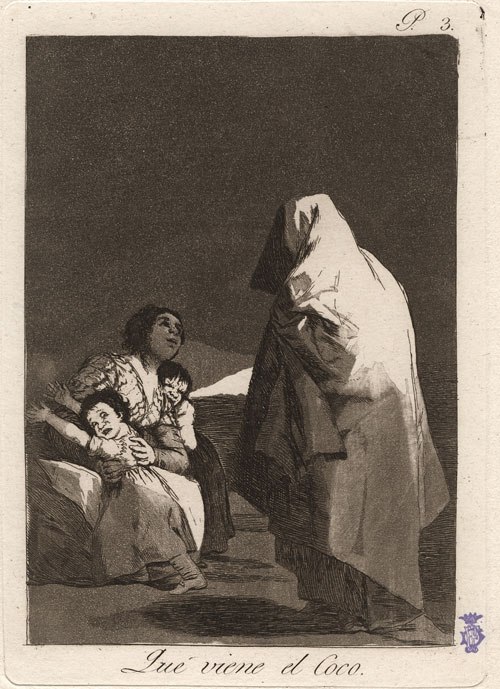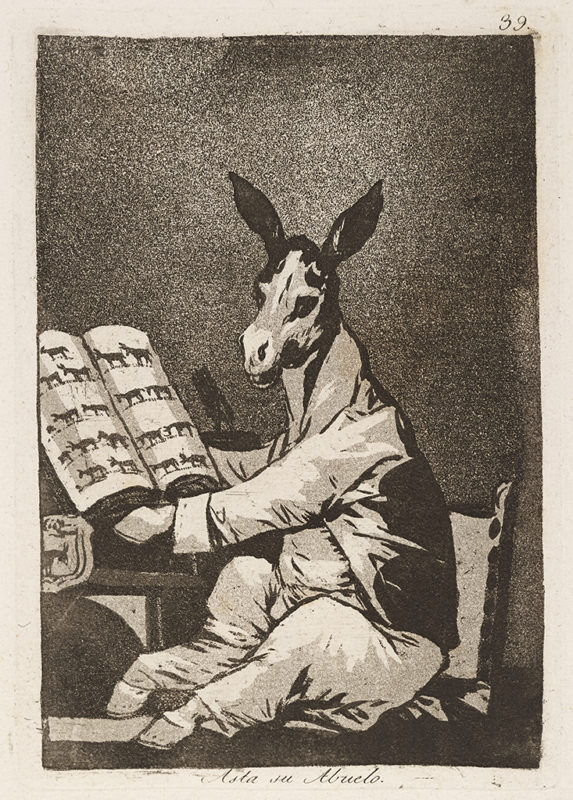Artist: Francisco Goya | Location:
Francisco Goya: Los Caprichos
September 20 - January 3, 2015
Los Caprichos, a set of eighty etchings by Spanish artist Francisco de Goya y Lucientes published in 1799, is one of the most influential series of graphic images in the history of Western art. This exhibition features a fine first edition of the complete set of the etchings (80) originally acquired in the late 19th century by the greatest donor to the Prado, Fernandes Duran, Marquis de Peralta.
The exhibition, Francisco Goya: Los Caprichos, was organized by Landau Traveling Exhibitions, Los Angeles, CA, in association with Denenberg Fine Art, West Hollywood, CA.
Note: This exhibition finished hanging on January 3, 2015.
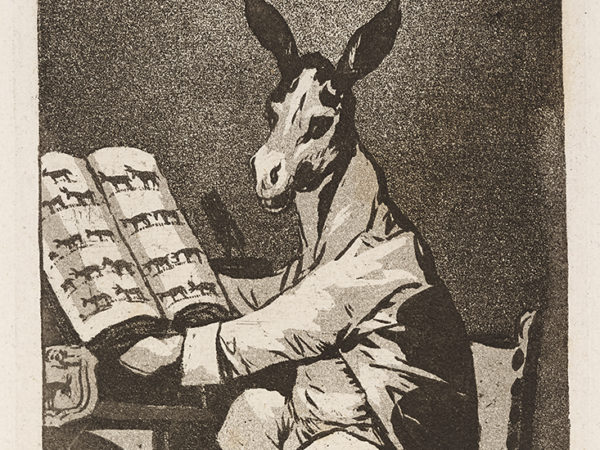
Francisco Goya
Francisco Goya was born in 1746, in a remote village near Zaragoza, Spain. Goya was the son if a craftsman and minor aristocrat. At 13 he began studying painting then moved to Madrid to work I the studio of his future brother-in-law. He spent two years in Italy, returned to Spain and and married Josefa Bayeu in 1773. They had seven children but only one survived infancy. Goya contracted a severe illness in 1793 which left him deaf. Scholars believe these events contributed to his expressive works marked by vivid faces and gestures of his characters. The artist lived until age 82 and even in death, he brought drama. His remains were transferred from Bordeaux, France, where he spent the final years of his life, back to Spain. At some point following his death, the story goes, Goya's head went missing. The bizarre tale, whose truth has been debated by Goya experts, continues to inspire curiosity

